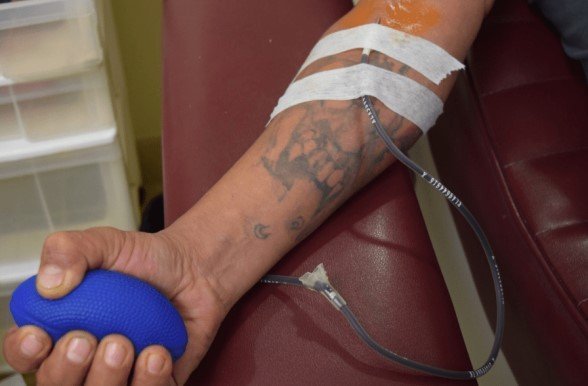Noticing your dog has a dry nose can be worrying for any pet owner. While a wet nose is often seen as a sign of good health, a dry nose doesn’t automatically mean trouble. A dog’s nose moisture can change throughout the day for many simple reasons. This guide will help you understand why your dog’s nose might be dry, what you can do about it at home, and when it’s time to call the veterinarian for advice.
What it Means When a Dog’s Nose is Dry
A dog’s nose naturally shifts between wet and dry. Often, a dry nose is perfectly normal and temporary.
One of the most common reasons is simply that your dog has been sleeping. Dogs don’t lick their noses in their sleep, so they can wake up with a dry nose that becomes wet again shortly after they’re awake and active. Similarly, a lack of activity can lead to temporary dryness.
Environmental factors also play a big role. Spending time near a heater, in an air-conditioned room, or in a dry climate can easily cause your dog’s nose to dry out. This is usually temporary and resolves once the dog hydrates or moves to a more humid area.
Common Causes of a Persistently Dry Nose
If your dog’s nose is dry for a long time, it could be due to a few common issues. Dehydration is a primary suspect. Just like humans, dogs need plenty of water to keep their bodies functioning well, and a dry nose can be an early sign they aren’t getting enough fluids.
Sun exposure is another culprit. Dogs with light-colored noses are particularly prone to sunburn, which can cause dryness, cracking, and peeling. Allergies, whether to food, plastic bowls, or environmental factors like pollen, can also manifest as a dry, irritated nose.
It’s important to check for signs of dehydration if you notice a persistently dry nose. Look out for:
- Loss of appetite
- Lethargy or unusual tiredness
- Sunken eyes
- Decreased urination
If you see these signs along with a dry nose, it’s best to consult a vet.
When a Dry Nose Signals a Health Problem
While often harmless, a consistently dry, cracked, or crusty nose can sometimes point to an underlying health condition. One such issue is nasal hyperkeratosis, a condition where the skin on the nose produces too much keratin, leading to a hard, rough, and crusty surface.
If left untreated, hyperkeratosis can be uncomfortable and lead to painful cracking and infections.
In rarer cases, a dry nose can be a symptom of a more serious systemic illness, such as an autoimmune disorder like lupus or pemphigus, or even canine distemper. However, these conditions are always accompanied by other, more severe symptoms like fever, nasal discharge, coughing, or sores. A dry nose alone is rarely a sign of a serious disease.
Simple and Safe Remedies for a Dry Nose
Once you’ve ruled out serious health issues, you can help soothe your dog’s dry nose with a few simple remedies. The key is to provide moisture and protection. Applying a thin layer of a dog-safe balm can provide immediate relief and help heal any small cracks.
It is crucial to only use products that are safe for dogs to lick and ingest. Human lotions and creams often contain chemicals that are toxic to pets. Always choose a product specifically formulated for canines.
| Safe Options for a Dog’s Nose | Products to Avoid |
| Vet-approved nose balms | Human lotions or moisturizers |
| Natural shea butter | Sunscreens containing zinc oxide |
| Coconut oil (in small amounts) | Petroleum jelly (can cause upset stomach if licked) |
| Olive oil | Medicated creams not prescribed by a vet |
The Importance of Hydration and Nutrition
Proper hydration is the first line of defense against a dry nose. Ensure your dog always has access to fresh, clean water. If you have an active dog, bring water along on walks and during playtime, especially in warm weather. Refilling their water bowl frequently encourages them to drink more.
Diet also plays a vital role. High-quality dog food rich in essential fatty acids, like omega-3 and omega-6, supports healthy skin, which includes the nose. You can also add moisture-rich foods to their diet, such as canned dog food or dog-safe fruits and vegetables like cucumber or watermelon, to boost their overall hydration.
How to Prevent a Dry Nose in Your Dog
Preventing a dry nose is often easier than treating it. A few adjustments to your dog’s environment and routine can make a big difference. If you live in a dry climate or use heating or air conditioning heavily, using a humidifier in your home can add moisture to the air and benefit your dog’s nasal passages.
Protecting your dog from the sun is also important. Avoid long periods of direct sun exposure, especially during peak hours. If your dog loves to sunbathe, consider applying a dog-safe sunscreen to their nose for protection.
Finally, regular check-ups with your veterinarian are essential. These visits allow your vet to spot potential issues early and provide guidance on diet, preventive care, and the best nose balms for your dog’s specific needs. A proactive approach helps keep your furry friend healthy from the tip of their nose to the wag of their tail.
Frequently Asked Questions
Why is my dog’s nose suddenly dry?
A dog’s nose can become dry suddenly due to simple reasons like waking up from a nap, dehydration after exercise, or being in a dry environment like a heated room. In most cases, it is temporary and not a cause for alarm.
Can I use Vaseline on my dog’s dry nose?
While not toxic, Vaseline (petroleum jelly) is not recommended. If your dog licks it off, it can lead to an upset stomach or diarrhea. It is better to use a balm specifically made for dogs with natural, digestible ingredients like shea butter or coconut oil.
Is a dry, warm nose a sign of fever in a dog?
This is a common myth. A dry or warm nose is not a reliable indicator of a dog’s health or body temperature. The best way to check for a fever is to use a rectal thermometer. Other signs of fever include lethargy and loss of appetite.
What can I put on my dog’s cracked nose at home?
For a cracked nose, you can apply a thin layer of a pet-safe moisturizer like coconut oil, shea butter, or a vet-approved nose balm. These products can soothe the area and promote healing. Be sure to choose a product that is safe for your dog to lick.






Leave a Comment